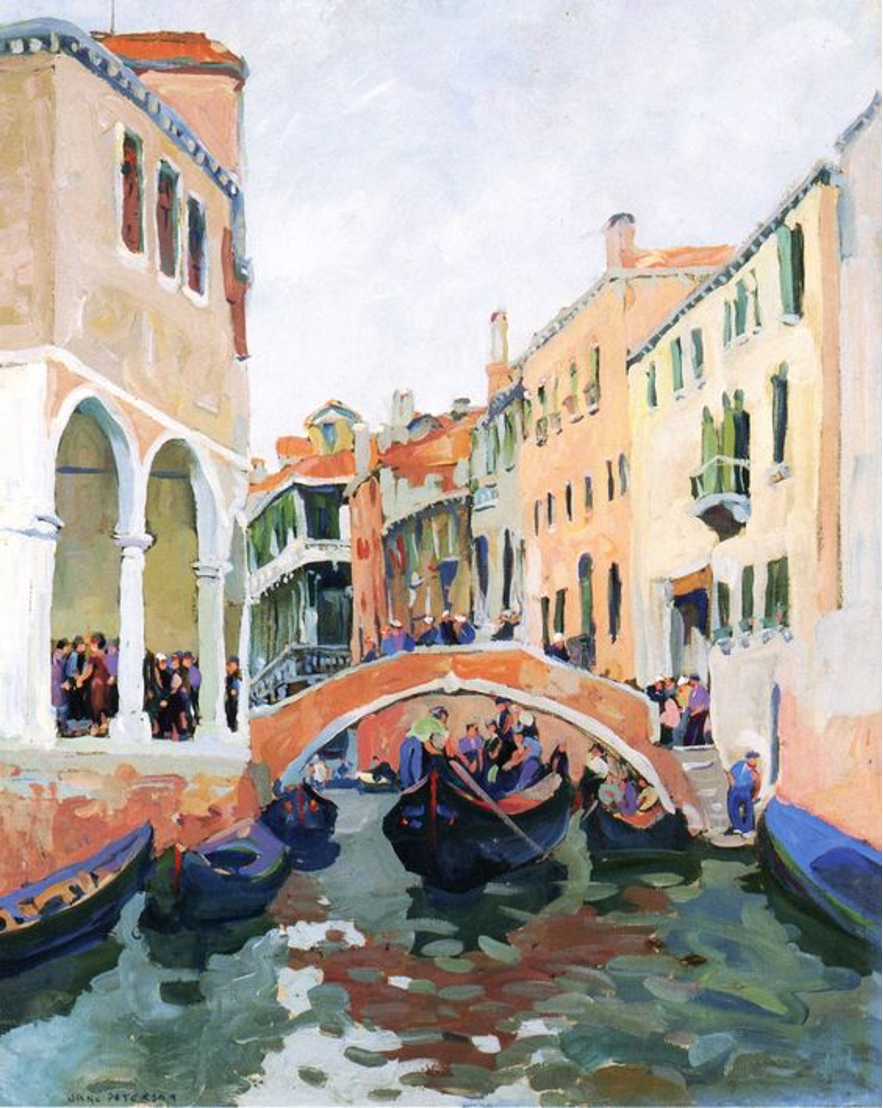Jane Peterson – Stellar Member Cape Ann School of Painting
A remarkable tale in the history of American art is the story of Jane Peterson, (1876-1965). Born in the Victorian era, she went on to lead a professional life driven by extraordinary talent and a peripatetic, worldwide search for inspiring subjects and scenery to paint. Few women would have dared then to travel alone to the sites that Jane Peterson painted. But travel she did, and as her shows and reputation grew the invitations arrived and doors opened. She eventually became part of the inner circle centered around the Parisian salon of Gertrude Stein, then including Pablo Picasso and Henri Matisse.
As a Child She Loved to Draw Pictures of Nature
Jane Peterson’s journey began when she passed an artistic aptitude exam at the Art Institute of Chicago, leading to acceptance at Pratt Institute and her first big trip, from Elgin, Illinois, to New York City, to begin her artistic pursuit.
During this early era of aspirational awakening, many daughters needed a mother as accomplice in the new calling. It might have been for unbridled encouragement, transportation to the train station, or a long talk with father. But it most certainly also took the form of money needed for the first down payment on the great adventure. Peterson's mother found the $300 for Jane to matriculate at Pratt Institute, a tidy sum in 1897. She was said to be immensely proud of her daughter and likely had the only collection of Jane's youthful drawings of nature.
One of her first teachers at Pratt was Arthur Wesley Dow, a prominent painter from Ipswich. His principles of simplified design and color influenced Peterson’s early work and throughout her career. The Ipswich Museum now houses the largest collection of Dow’s paintings. To help cover expenses while at Pratt, Peterson began selling her own works and teaching fellow students. She eventually became a revered teacher at Pratt. After graduating in 1901, her first job was Drawing Supervisor of Brooklyn Public Schools. She continued her own study at the Art Students League in NYC, under Frank DuMond – while saving money for the inaugural trip to Europe in 1907.
The First Trip and First Show
After arriving in Paris, she eventually found a mentor with the Spanish artist, Joaquin Sorolla, whose sun-drenched style inspired new brilliance in Peterson's work and the success of her first one-woman show in 1910. The paintings that ensued are the best narrative for the artistry that followed and the itinerary of a life of travel.
The artist, age 33, painted "Boats on the Nile, Dawn" as observed directly from the banks of the river. Traveling alone in North Africa, onlookers may have viewed her as too much of a curiosity to disturb. After the 1910 trip, Peterson presented her first one-woman show with 87 paintings of Venice, Spain, Algeria and Eqypt. The exhibition commenced at the Art Institute in Chicago and produced a near sell-out when it concluded in New York City. Jane Peterson was on her way.
Cape Ann Sojourn


















